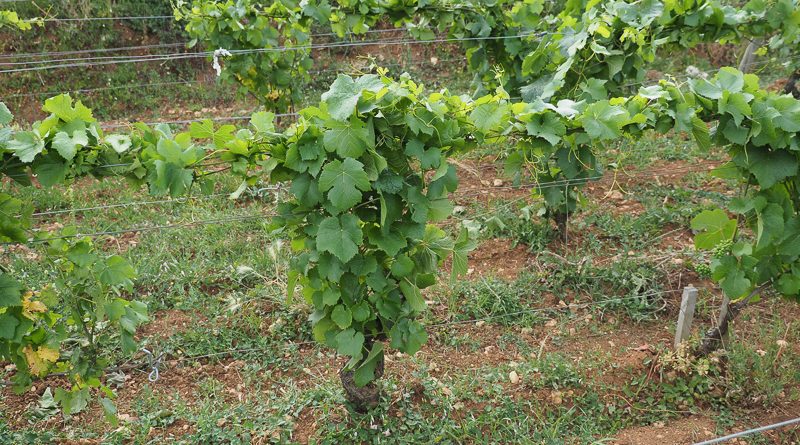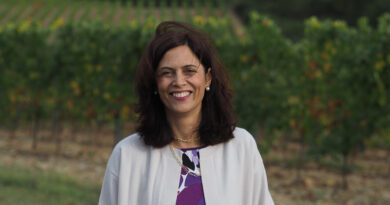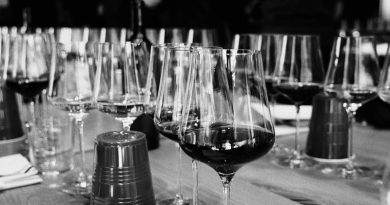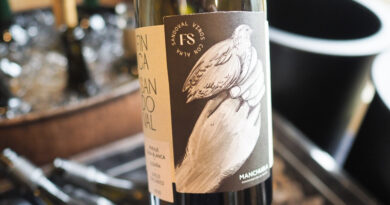‘Tressage’: an alternative to hedging vines, that claims to have some benefits
In viticulture, a widely practiced form of leaf removal is hedging of the canopies, taking off the developing shoots at the top, as well as any extra growth sticking out into the row. The goal here is twofold: to tidy up the vineyard by removing unwanted growth, and also to slow down the vegetative phase of growth and get the vine to focus on fruit ripening.
In an ideal world, the vine will be in perfect balance. As veraison takes place, the canopy stops growing naturally (as do the roots) and the vine switches its attention to the fruit, which becomes the main sink for carbohydrate resources. This doesn’t always happen, of course. When there’s still plenty of water and nutrients around, the canopy will just keep growing, and that’s where hedging often becomes necessary.
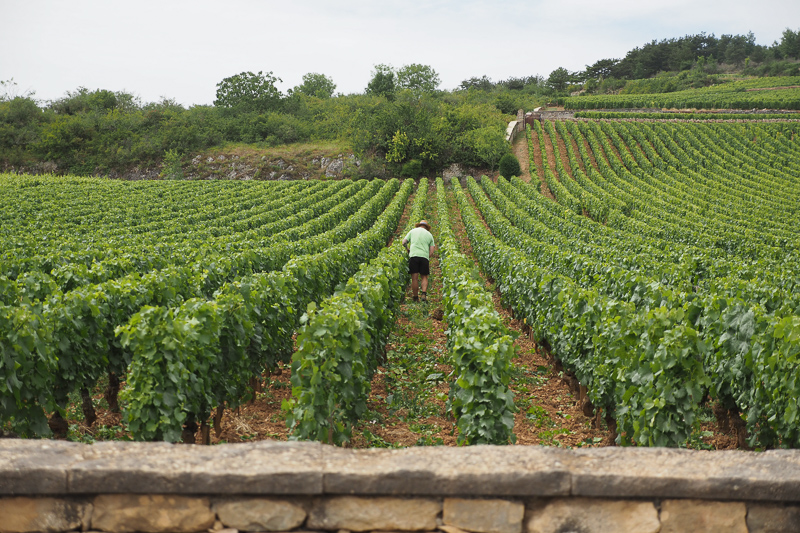
In the Montrachet vineyard in Burgundy, I’ve seen hedging being done manually with shears, but this is because some growers only have a couple of rows, and the grapes are worth insane amounts so hand work is justified. Normally it’s done out with a tractor carrying cutters, and in the same pass the top is trimmed as well as anything sticking out into the row.
However, a new trend has been an alternative management technique that doesn’t hedge, but instead involves taking the shoots growing at the top of the canopy, rolling them and tucking them in, wrapping them around each other. This is sometimes mistakenly referred to in the English-speaking world by the term palissage, but in French this simply means trellising. The correct French term is tressage, which is best translated as braiding.

Lalou Bize-Leroy at Domaine Leroy is the most well known proponent of this technique, claiming that it avoids stressing the plant, and it also keeps the apex, the growing tip. When the apex is cut off by hedging, the theory here is that hormonal signalling changes and the inhibition of lateral buds is removed. These can then grow out. She stopped hedging her vines and began rolling in 1999. Initially she did this with normal sized Burgundian canopies, but has since increased her canopy height significantly (which means a new custom over-row tractor is needed) while keeping the rolling technique for the shoot tips.
I’ve seen this in other vineyards in Burgundy. Growth of laterals is a pain, because these make a mess of the fruiting zone, so it makes sense to inhibit their growth. The technique also seems to encourage rachis elongation, which reduces the compaction of the cluster – this is definitely a good thing for reducing risk of botrytis late in the season.
Some claim, however, that tressage can increase the risk of downy mildew, and that when it comes to pruning time it can be a pain to get the shoots off the trellising.
In Bordeaux, Château Palmer have used this technique and talk about their work ‘braiding’ vines together on their blog: https://www.chateau-palmer.com/en/memories-vines
‘After several years of experimenting, we’ve noted that the creation of these bridges results in an improved management of the plant’s water consumption. And since we no longer trim the vine tips, it also limits the growth of secondary shoots,’ they say.
In Alsace, Zind Humbrecht have experimented with the technique, as have Rieffel, Beck-Hartweg and Frick. In the Loire, Patrick Baudouin has used it for Quarts de Chaume. It is very common in Piedmont, says wine merchant David Berry-Green, and there it helps keep the must pH low, extends the hang time, reduces sugars and de-energizes the vineyard. He names Barto Mascarello, Trediberri, Figli, Luigi Oddero and Roagna as producers who practice this method.
Jean-Baptiste Lecaillon of Champagne Louis Roederer says that he uses it on Chardonnay and Pinot Noir on all his single vineyard Coteaux Champenois blocks. To use it, he says ‘you need to be perfectly in balance with the vigor of your vines.’ If the vines are too vigorous, tressage can increase disease pressure, but if the vines are balanced there is no problem. The result is lower acidity in the grapes (particularly malic acid), smaller berries, and lower sugar levels.
In New York State, some growers are using it in the Finger Lakes. There is currently an ongoing research project. Anne Kearney, a student working under Dr Justine Vanden Heuvel at Cornell University, has been looking at the effect of tressage (referred to as palissage in the grant report) and also its timing on Cabernet Franc in the Finger Lakes. The full results aren’t published but lateral growth was inhibited, which they think may have been because the shoot tip remained as a carbohydrate sink, and clusters were less compacted. https://projects.sare.org/project-reports/gne17-152/
Some are sceptical though, suggesting that lateral growth has more to do with vine water and nitrogen status than apical dominance of the shoot growing tip. It will be interesting to see whether this technique catches on more widely.
Here’s a short film (in French) showing tressage in action:

